In our previous article on the gold mining industry, we described in detail why the time tested strategy of hedging future production of gold (in order to ensure that any given miner’s future revenue stream, earnings, and balance sheet will appear smoother (less volatile) on a year-by-year basis) has fallen (way) out of favor.
In this article, we will lay out some of the reasons offered by experts why gold mining stocks may be approaching a “bottom”, and therefore setting up for a potential uptrend. In the interests of avoiding any misunderstanding, let me state upfront that I am not yet fully committed to the “we’ve reached the bottom” stance.[1] But I do indeed understand the basic arguments (premises) used within the standard bullish case. Therefore, I believe these premises are worthy of being laid out in one spot.
VALUATION:
1) The chart below makes it clear that gold mining stocks (represented through the HUI Index) have underperformed the actual price of Gold during the past six years.
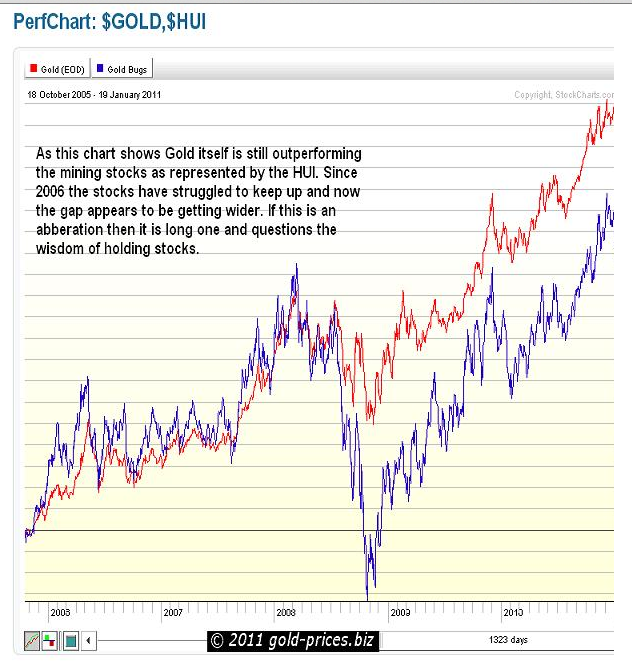
The red linei Gold; the purple line is a Gold Miner Index. Miners have been underperforming Gold in recent years.
2) This chart from Bloomberg focuses upon the interruption in the general correlation between Gold prices and gold mining stocks. As we see, there was a 93% correlation in price movement into the beginning of 2008. Ever since that point, there has been an expanding spread between the price of Gold and the price of gold mining stocks.
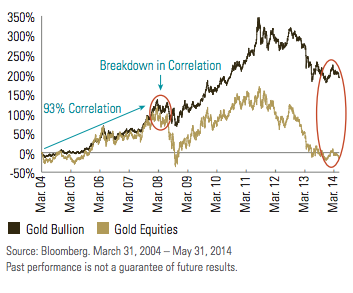 3) On the basis of the Price to Cash Flow Ratio, this chart from the Bank of Nova Scotia suggests that gold mining stocks (in the aggregate) are at the lowest valuation level in 40 years!
3) On the basis of the Price to Cash Flow Ratio, this chart from the Bank of Nova Scotia suggests that gold mining stocks (in the aggregate) are at the lowest valuation level in 40 years!
With the caveat that few chart patterns are absolutely “perfect”, as well as the reality that (in the right hands) charts can be used to justify a number of different interpretations, take a look at these charts and decide if you see one or more helpful patterns:
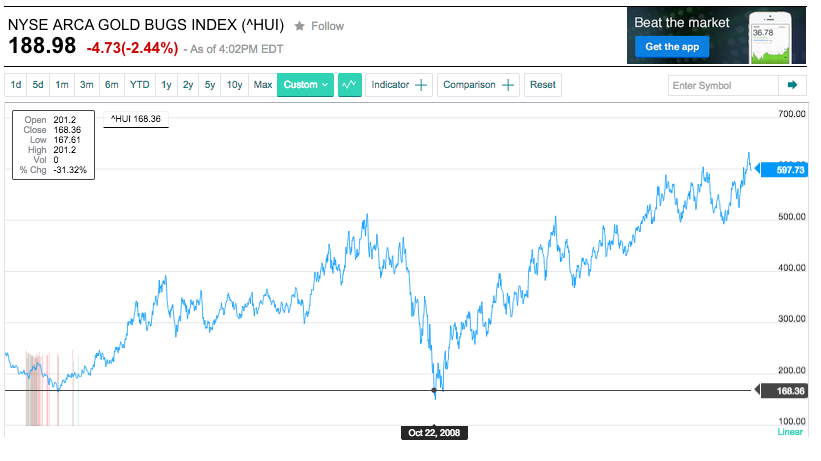
This is a 10 year chart of the HUI Gold BUGS Miner Index, highlighting a low point in October of 2008.
HIGH DEMAND FOR PHYSICAL GOLD
Among the countless hackneyed expressions that readers of investment commentaries run across on a chronic basis is some variation on: “Gold is an eternal store of value because it is a limited natural resource with limited (known) new production each year, and cannot be produced artificially by humans.”
Well, hackneyed or not, it is true (as it has always been true throughout human history). Despite its “fall from grace” since peaking in August of 2011, the demand for physical gold remains remarkably strong. During the past couple of years, there have been reports of “runs” on released issues of newly minted gold coins, shortages reported by dealers of easily tradable gold coins, and seemingly bizarre behavior by government authorities charged with the safe storage of gold bullion.
Here is at least some anecdotal evidence of these dynamics that surround physical gold
1) Despite reports to the contrary, demand for physical gold remains strong in China and India:
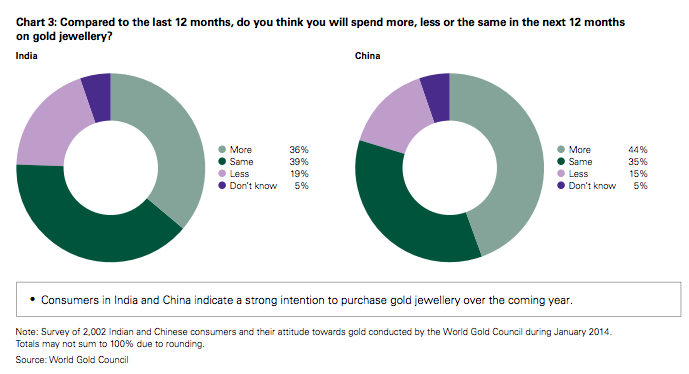 2) Because of that high demand in China and India, premiums paid by buyers vis-à-vis the “spot” price in these countries remains substantial[2]:
2) Because of that high demand in China and India, premiums paid by buyers vis-à-vis the “spot” price in these countries remains substantial[2]:
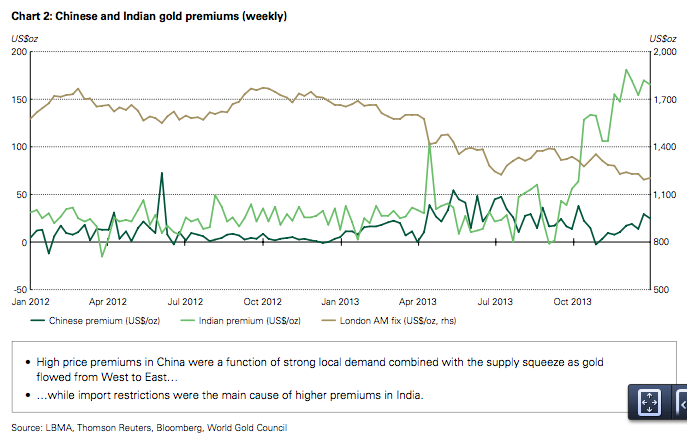 3) Global demand for gold coins remains strong. Notice the prominence below of Thailand and Turkey!
3) Global demand for gold coins remains strong. Notice the prominence below of Thailand and Turkey!
4) A huge uptick in demand for physical gold among central banks:
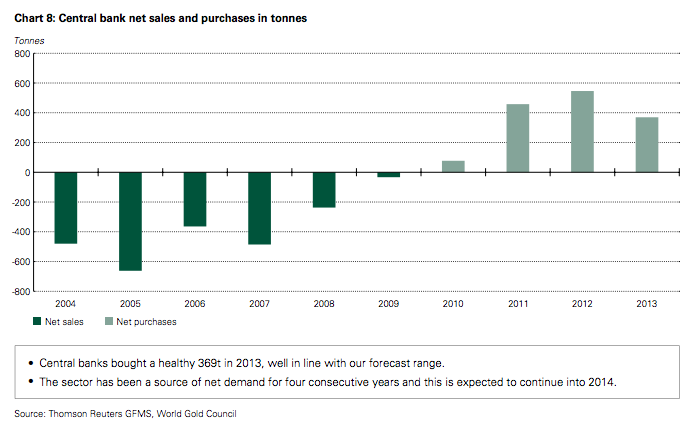 5) Reports emerged during the fall of 2012 that Germany made an official request for the return to Germany of 300 tons of the gold bullion that it has had “in storage” within the U.S. through the Federal Reserve. On the face of it, that is a perfectly reasonable request, don’t you think?
5) Reports emerged during the fall of 2012 that Germany made an official request for the return to Germany of 300 tons of the gold bullion that it has had “in storage” within the U.S. through the Federal Reserve. On the face of it, that is a perfectly reasonable request, don’t you think?
Well, friends, think again. The Fed had a fit (not officially, of course… but behind the scenes). The Fed generated every excuse in the book for why that request was unnecessary, inconvenient, etc., etc.[3]. Since that 2012 request, the Germans have received the return of just 5 tons!
Just as bizarre, the Fed has rebuffed multiple requests (demands) by Germany[4] for an audit of the gold bullion held in storage by the Fed. And here I thought that audits were such a great idea that federal regulations frequently require that individuals and companies be audited. Evidently what is a good idea for others isn’t such a good idea for the Fed!
Germans are a smart people. After almost two years of getting the run around, receiving lots of messages full of obfuscation and empty excuses, German leaders realized that beating their heads against a brick wall would only result in the Germans developing a chronic (and very painful) headache. Therefore, late this past June they (at least “officially”) gave up. In an attempt (vain though it may be) to “save face”, they insisted that “all is well… Germany can trust the U.S. Federal Reserve.
It doesn’t take a rocket scientist to conclude that something is wrong with this picture! I will leave it to you to conclude what it means. But one thing it could mean is that some large portion of the gold held by the Fed is not currently “available” – not even for the purpose of returning it to its owner![5]
THE GLOBAL MONETARY SYSTEM
This is certainly a category within which a whole flood of issues could be discussed. At its core, this issue boils down to fundamental economics. Unless some higher power has radically transformed the Law of Supply and Demand, then at some point in the future (months, years, or decades hence) the flood of sovereign “paper” currency[6] that has been issued around the world[7] will “catch up” with us. After all, that flood of paper money is a ballooning “Supply” … a supply that (Econ 101 assures us) will reduce the value of each given unit of that currency.
Here is a graph of the Balance Sheet (B/S) of the U.S. Federal Reserve, visually illustrating an amazing (or frightening) expansion within the U.S. money supply during the past 7 years:
The B/S stood at $869 billion on August 8, 2007, and now stands at nearly $4.5 trillion. That amounts to almost a five-fold increase!
Eventually, economics tells us, any important item we want to buy will (or should) cost more dollars than it did seven years ago. In light of that concept, here is a chart of the Fed B/S since the height of the rally in gold prices (August of 2011), when that B/S totaled just $2.85 trillion (before an additional $1.7 trillion was added!).
When I ran across a video (“Death of the Dollar: The Hidden Secrets of Money: Ep. 3”)[8], I was intrigued on multiple fronts. It is a streaming “documentary” published on YouTube, but it is also (clearly) a subtle “infomercial”. Not knowing anything about the speaker, Mike Maloney, I did an Internet search but could not find a mini-bio in the standard way. So I dug deeper and discovered that his highlighted claim to fame (in most instances) was one book (see the image below).
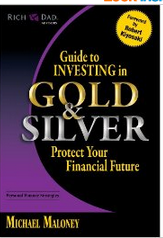 However, he has produced a series of different documentary titles that are all available online as streaming video. So I decided that Mr. Maloney must be a great example of what might be the “next generation” form of expression for non-fiction authors – serial streaming videos.
However, he has produced a series of different documentary titles that are all available online as streaming video. So I decided that Mr. Maloney must be a great example of what might be the “next generation” form of expression for non-fiction authors – serial streaming videos.
I offer this detail because I will soon be highlighting a few of Maloney’s slides as more anecdotal evidence that suggests the convergence of “fundamentals” which (eventually) should push the price of gold upward. I include brief, edited biographical details (as found in Amazon.com) about Mike Maloney in the footnotes.[9]
My first topic is the relationship of the U.S. Dollar to Gold. In a perfect world, that relationship would be consistent.[10] However, during the past 114 years, it has changed four times:
I) On March 14, 1900, the Gold Standard Act was passed, providing that a fixed amount of gold would become the “standard unit of value”, with all U.S. currency/coin being maintained at that “standard”.[11] The act also guaranteed that the dollar was convertible into gold.
As you can see in the first of Mike Maloney’s slides from his footnoted streaming video (“Death of the Dollar” https://www.youtube.com/watch?v=y-IemeM-Ado&index=3&list=PLQVqJq09GmwtJ_y1Ytde5oNSmHENzjOA9) , the Gold Standard Act brought tight monetary (and fiscal) discipline to the U.S. The khaki (greenish brown) line represents the value of the base U.S. currency in circulation, while the gold line is the value of gold held by the U.S. government. Notice that those lines are initially identical!
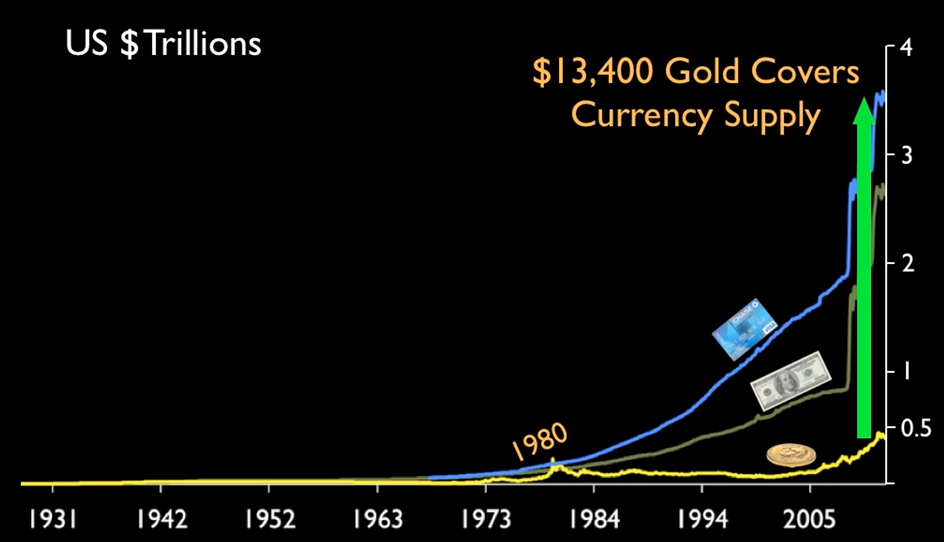
The slide is from Mike Maloney's streaming video: "Death of the Dollar: Episode 3"... as will the next several slides.
That changed a bit in December 1913, when the U.S. created the Federal Reserve Bank (Fed), and we know well what the Fed can do with our money supply! Needless to say, the base money supply started to edge above the gold line!
When the U.S. entered World War I, expenses zoomed upward, but so did the U.S. gold in hand (other countries were borrowing money from the U.S.). But soon the levels of incoming gold leveled off while the U.S. kept increasing its money supply. That caused an imbalance that could not be sustained – especially once the great 1929 “Stock Market Crash” marked the start of the greatest period of economic hardship in U.S. history: the “Great Depression”.
II) By the time Franklin D. Roosevelt was elected president in 1932, and faced the intimidating task of leading the country up and out of its widespread unemployment and ravaging deflation[12], he worked with Congress (in the early weeks of 1933) to implement numerous Executive Orders and Congressional Acts that suspended the gold standard (except for foreign exchange), revoked gold as universal legal tender for debts, and banned private ownership of large quantities of gold coins. As you can see, the result was that the price of gold skyrocketed… moving upward toward the level of the U.S. money supply (a good thing).
III) Then came World War II. As that conflict was winding to a close, the financial coffers of world powers engaged in the war had dwindled significantly. Global leaders recognized that rebuilding a viable global economic system following the war would be extremely challenging, and would require a sound, commonly understood and accepted “means of exchange”. Therefore, in July of 1944, over 700 delegates from 44 “Allied” nations gathered in Bretton Woods, New Hampshire, for the “United Nations Monetary and Financial Conference”.
The result of nearly a full month of discussion and negotiation was a joint agreement on a system of rules, institutions, and procedures through which to regulate an international monetary system. To facilitate such, the delegates agreed to establish an International Monetary Fund (IMF) and an International Bank for Reconstruction and Development (IBRD) (which has since become a part of today’s World Bank Group). Beyond the creation of those institutions, the delegates created an international financial network within which each country pledged to adopt a monetary policy that maintained a stable exchange rate by tying its currency to gold! To enable smoother operation of this network, the IMF was granted responsibility to bridge temporary imbalances of payments.
There were, of course, innumerable other matters agreed upon by the delegates; but one particular agreement from this conference bears special mention:
Agreement was made that competitive devaluation of currencies would be prevented![13]
Ever since that conference concluded, it has been referred to as the Bretton Woods Conference, and the system it created has been dubbed the “Bretton Woods System”. Notice two things in the slide below: 1) as Europe ramped up for World War II, gold started streaming into the U.S. (just as it did in World War I), and 2) that influx of gold helped the U.S. to better manage its own load of war debt, which caused the U.S. money supply to balloon. But once again, a huge gap grew between the value of U.S. currency and the gold it had in hand!
That gap was aggravated when other nations (such as France, whose President DeGaulle is pictured in the slide) began to return U.S. dollars in exchange for gold!!
That led to the following result! Take a good long look:
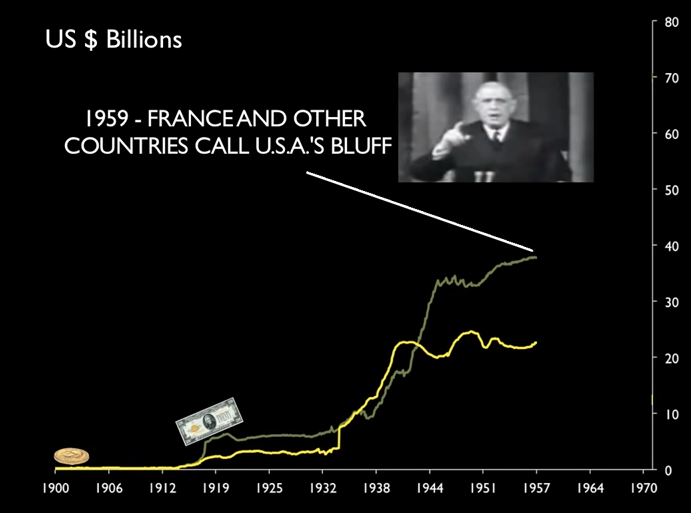 IV) What do you suppose happened in 1971? Yes, it only took 27 years for the U.S. to “jump ship” from the Bretton Woods System and strike out in a different direction.[14] In mid-August of 1971, President Richard Nixon announced that the U.S. was unilaterally terminating convertibility of the U.S. Dollar into gold.
IV) What do you suppose happened in 1971? Yes, it only took 27 years for the U.S. to “jump ship” from the Bretton Woods System and strike out in a different direction.[14] In mid-August of 1971, President Richard Nixon announced that the U.S. was unilaterally terminating convertibility of the U.S. Dollar into gold.
The ultimate effect of Nixon’s action was to (in essence) bring the Bretton Woods System to an end and effectively transform the U.S. Dollar into a “fiat currency”[15]. It also led to the United States dollar becoming a global “reserve currency”.[16]
Zooming ahead into the 2012 period (just as QE III had been announced) here is Mr. Maloney’s projection of what the price of gold would need to be in order to “cover” the value of all of the U.S. currency (all types, including credit card debt, etc.) in circulation.
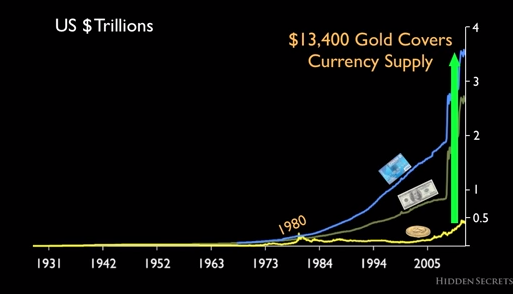 As you know, that value would be over 10 times higher than the current market price of gold.
As you know, that value would be over 10 times higher than the current market price of gold.
Keep all of these developments and trends in mind, and then consider these telling pieces of anecdotal evidence regarding potential changes in the global monetary order:
1) More and more nations have entered into bilateral trade arrangements that bypass the U.S. Dollar;
2) On an absolute basis, China has the globe’s highest amount of excess foreign reserves. What are they doing with all of that “buying power”?
It is clear that China is using more and more capital to secure gold, and less and less to hold U.S. Treasury Securities.
3) Just how much gold does China hold? The trend in the growth of Chinese gold holdings is steepening upward!!
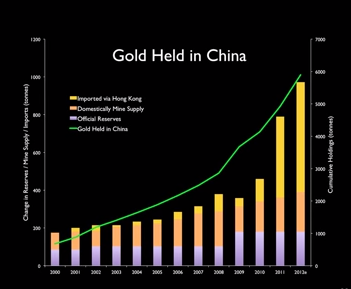 4) Is China content (much less “happy”) with the U.S. enjoying the many financial and monetary advantages of its national currency holding the exalted status of the world’s “reserve currency”? Here is a stark answer from the then-President of China, found in the January 17, 2011 edition of the “BBC News Business”:
4) Is China content (much less “happy”) with the U.S. enjoying the many financial and monetary advantages of its national currency holding the exalted status of the world’s “reserve currency”? Here is a stark answer from the then-President of China, found in the January 17, 2011 edition of the “BBC News Business”:
“Chinese President Hu Jintao has said the international currency system dominated by the US dollar is a ‘product of the past’.
“Mr. Hu also said China was taking steps to replace it with the yuan, its own currency, but acknowledged that would be a ‘fairly long process’.”
I will leave this topic for now, but it is important for us to all understand what is at stake with regard to the above. If/when the day comes that the U.S. Dollar is no longer the primary global reserve currency, the price of gold (in dollars) will skyrocket.
CONTRARIAN THINKING
You’ve seen the charts of gold and gold mining stocks. Since 2011, those charts have been very bearish. As we have seen each week for months now, the SPDR Gold Trust ETF (GLD), Market Vectors Gold Miners ETF (GDX), and Market Vectors Gold Miners Junior ETF (GDXJ) have been struggling with low Relative Strength (RSI), low On Balance Volume (OBV), and nearly universal negative commentary. Whenever any of them show “signs of life”, the best the ETF has been able to do is bump up into the bottom of the nearest resistance line and roll back over.
Add to this long-lived, nearly unrelenting negative sentiment and market action the fact that (as I detailed in our earlier gold miner hedging article: https://www.markettamer.com/blog/investors-say-hooey-on-time-tested-strategy-of-hedging)
most of the major “big bank/financial behemoths” are still negative on the price of gold. Many are referring to $1,000 as the next destination point for the price of gold.
Well, to that I offer two rebuttals:
1) The “big boys” have often been proven wrong, no matter how confident they sounded when they made their errant predictions;
2) Many gold miners have been targeting $1,200/oz. as a line in the sand vis-à-vis their gold production costs. As I highlighted in the earlier piece, gold miners have had to put a tight rein on their costs – from equipment purchases to new exploration to payroll. According to Thomson Reuters’ GFMS research team, the average industry “all-in cost” of producing one ounce of gold (as of the first six months of 2014) has been pared down to $1,350 – from a full-year cost in 2013 of $1,696!! [An amazing 20% cost reduction in less than a year!]
If the price sinks to $1,000/oz., it is hard to imagine that a plethora of miners won’t either desist from further production until profit is in sight or go out of business (or be acquired). Consolidation within the industry and/or significant production reductions will (through the laws of economics) put upward pressure on gold prices.
Confirmed “contrarian thinkers” will quite likely begin planning a plan for creating a position in gold mining stocks now, so she/he will be well-prepared at whatever point that investor would consider a positive indicator of a sustained upward move!
A PERSPECTIVE ON OPTIMIZING ANY UPWARD MOVE IN GOLD
Those of you who read the earlier article on “Hedging” know that, today, investors in mining stocks want to buy un-hedged gold miners! Where do you find a list of un-hedged gold mining stocks?
As it turns out, that is quite simple… as easy as looking through a published index:
The NYSE Arca Gold Bugs Index (HUI)
Here is a description of the index:
This is a modified equal dollar weighted index of companies involved in gold mining. “BUGS” does not refer to the pests that can annoy us, or to the problematic coding in computer software that annoys us even more! Instead, it is an acronym: “Basket of Un-Hedged Gold Stocks”! The index was developed to provide significant exposure to near term movements in the price of gold through companies that do not hedge their gold production beyond 1.5 years. Its base value on 3/15/1996 was 200.
Here is a list of component stocks as of 9/19/14, currently including 18 stocks:
The NYSE offers another well-known gold mining index:
The NYSE Arca Gold Miners Index (GDM)
Regular traders more commonly think of it in terms of the ETF that is based upon that index:
The Market Vectors Gold Miners ETF (GDX)
The index is a modified market capitalization weighted index of companies involved primarily in the mining of gold and silver. It currently includes 40 stocks. The index is not filtered for whether or not a company hedges its production.
The current portfolio looks like this:
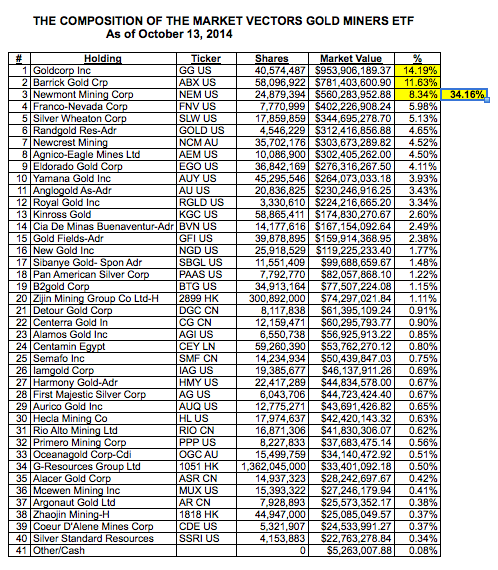 As you can see, both of these indices are a bit top-heavy – with the top three components within HUI accounting for almost 41% of the total index, while the top three stocks in GDX make up over 34% of the ETF.
As you can see, both of these indices are a bit top-heavy – with the top three components within HUI accounting for almost 41% of the total index, while the top three stocks in GDX make up over 34% of the ETF.
A couple of other distinctions are fairly obvious as you compare the two indices:
1) HUI consists of only gold miners, while GDX includes some silver miners;
2) on a relative basis, HUI is more “large cap” weighted than GDX, which includes some mid-cap issues (just under 30%).
Although I could not find any comparable HUI metrics, here is a slide from the GDX webpage on that ETF:
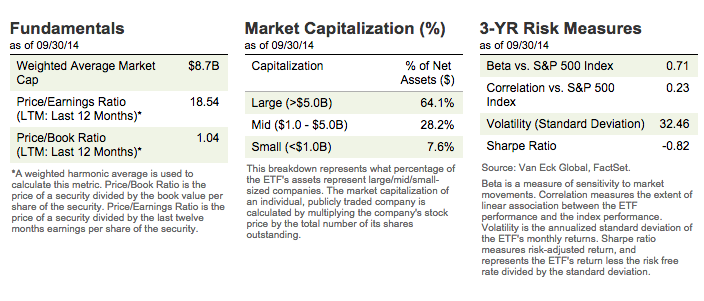 During the YTD period, the HUI Index and GDX ETF have performed in parallel fashion:
During the YTD period, the HUI Index and GDX ETF have performed in parallel fashion:
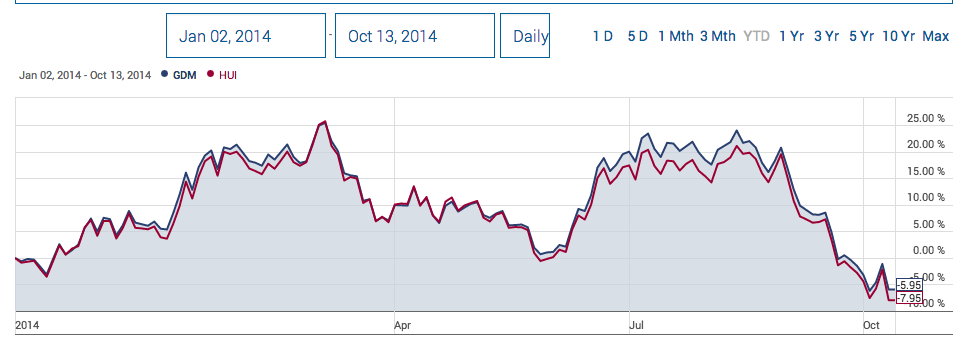 As those interested in preparing for setting up a position in gold miners weed through investment options, here are some possibilities.
As those interested in preparing for setting up a position in gold miners weed through investment options, here are some possibilities.
If you prefer trading in individual stocks, and you want an un-hedged gold miner, the list of companies in the HUI Index is a perfect list from which to choose.
In case you are interested, here is the list of the world’s top ten largest (by market cap) gold miners. I include the name, stock ticker, corporate home, market cap, and annual production. (Note that #9 is a private company, therefore no publicly traded stock ticker and no “market cap” number).
1) Barrick Gold Corp. (ABX) – Canada
Market Cap: $20 billion
7.16 Million Ounces/Year
2) Newmont Mining Corp (NEM) – USA
Market Cap: $11.5 Billion
5.1 Million Ounces/Year
3) AngloGold Ashanti (AU) – (South Africa
Market Cap: $7 Billion
4.1 Million Ounces/Year
4) Goldcorp Inc. (GG) – Canada
Market Cap: $23 Billion
2.67 Million Ounces/Year
5) Kinross Gold Corp. (KGC) – Canada
Market Cap: $6.5 Billion – 2.63 Million Ounces/Year
6) Newcrest Mining Ltd. (NCMGF) – Australia
Market Cap: $8.5 Billion
2.1 Million Ounces/Year
7) Gold Fields Ltd. (GFI) – South Africa
Market Cap: $3 Billion
2 Million Ounces/Year
8) Polyus Gold International (PLZLY) – Russia
Market Cap: $ 4 Billion
1.65 Million Ounces/Year
9) China National Gold Group Corp. (Privately-held) – China
1.4 Million Ounces/Year
10) Yamana Gold Inc. (AUY) – Canada
Market Cap: $8.5 Billion
1.2 Million Ounces/Year
I caution you that trading in a single stock is more risky than trading an ETF. So if you prefer ETF possibilities (in addition to GDX) here is one (one focuses on “exploration” instead of mining):
GDXJ Market Vectors Gold Miners Junior ETF (Smaller cap version of GDX)
GGGG Global X Pure Gold Miners ETF
GLDX Global X Gold Explorers ETF
RING iShares MSCI Global Gold Miners Fund
LEVERAGED
NUGT Direxion Daily Gold Miners Bull 3X Shares ETF
DUST Direxion Daily Gold Miners Bear 3X Shares ETF
Remember that the leveraged ETFs can be treacherous is not completely understood, and they are intended for short-term positions – not for holding over the course of many days or weeks (due to the ill effects of regular re-balancing).
Finally, there is a relatively recently launched gold mining ETF that is worth a good look:
The Sprott Gold Miners Exchange Fund (SGDM)
Eric Sprott is a familiar name among long-time Market Tamer followers, as Ron has mentioned his funds and commentary on gold through the years. Here is a good description of the fund,
Note the wording “by placing emphasis on gold stocks with high historical beta to the price of gold…”. I interpret that to mean that the ETF may include one or more hedged gold mining companies, but such a company is only included because, in the big picture, it will likely offer very good “bang for the buck” – which is (after all) why investors prefer un-hedged miners in the first place! You can find lots more information at: http://www.sprottetfs.com/.
INVESTOR TAKEAWAY:
I hope that by now (after reading both articles), you have a clearer understanding about hedging, and why investors have come to prefer trading or investing in un-hedged mining companies. I hope that I have also been helpful (although in no way comprehensive) in offering a look at some fundamental reasons why gold is undervalued at its current price:
1) Valuation
2) Possible Chart Bottom
3) High Demand for Physical Gold
4) The Global Monetary System
5) Contrarian Thinking
I once again caution all of us that just because a stock or a commodity is currently undervalued, there is no guarantee that it won’t remain undervalued well into the future. However, historical experience has shown that keeping one’s eye on undervalued assets with the intention of creating a bullish position at an opportune time has proven profitable.
DISCLOSURE: The author owns IAMGOLD (IAG), Market Vectors Gold Miners ETF (GDX), and SPDR Gold Trust (ETF). Nothing in this article is intended as a recommendation to buy or sell anything. Always consult with your financial advisor regarding changes in your portfolio – either subtractions or additions. And in case you are wondering, I have no connection with Eric Sprott or his new ETF. I include it here only because he is a recognizable authority on precious metals and I did not know the ETF existed until I researched this article!
FOOTNOTES:
[1] I am restrained in any bullish enthusiasm by my own gold-related axioms: 1) gold has proven that it has been utterly resistant to “fundamental” bullish arguments during the past couple of years; 2) we know that market sentiment is currently extremely negative, and (logically or not) “sentiment” can persist for extended periods of time; 3) there is captivating evidence from several quarters regarding manipulation within the gold market, which I suspect will make a sustained uptrend more challenging than would be the case in a totally free, transparent market; and 4) the surest way for gold to jump in price (in terms of the $) would be for the world to drop the U.S. Dollar as its “reserve currency”. What are the odds of that happening anytime soon?
[2] Note that a primary cause for exorbitant premiums in India was government regulations imposed nationwide to curb trading in gold by severely restricting the importation of gold.
[3] I wouldn’t put it past the creative Fed bureaucrats to have offered this excuse: “We are so sorry, Chancellor Merkel, but in acting upon your recent request, we discovered that the locks on our gold storage vaults have become so rusted over that we were unable to open them. You see, Chancellor, every other country in the world for whom we store gold trusts us so completely that they have never felt compelled to ask for its return!! It would seem that we have gotten out of the practice of pulling gold from the vaults, leaving the locks to rust through the passage of time. You know how damp it gets below ground!”
[4] And others
[5] One hypothesis holds that the “large portion” referred to above has been hypothecated (or even re-hypothecated). To get a grasp on these terms, I encourage you to Google “Fed hypothecation of Gold” and/or read this piece: http://www.wealthwire.com/news/metals/4303
[6] Actually, it is as much digital currency as “paper”, since the Fed’s creation of money has little to do with the activities of the U.S. Bureau of Engraving and Printing
[7] Most notably, the U.S. and Japan, but others have joined in the practice.
[9] Mike Maloney is the author of Guide to Investing in Gold and Silver, part of Robert Kiyosaki's “Rich Dad's Advisors” series of books. Since 2005, Mike has partnered with Robert Kiyosaki in financial education of the public. Mike’s specialization is precious metals and currency.
Mike also offers lectures on monetary history, economics, and financial literacy. Mike is the owner and founder of GoldSilver.com, an online precious metals dealership that specializes in delivery of gold and silver to customers, as well as secured storage. http://www.zerohedge.com/news/2014-09-20/big-picture-gold-and-silver
[10] By which I mean persistent through the decades.
[11] From the law: “the dollar, consisting of twenty-five and eight-tenths grains (1.67 g) of gold nine-tenths fine, as established by section thirty-five hundred and eleven of the Revised Statutes of the United States, shall be the standard unit of value.”
[12] Among many other economic dislocations.
[13] I am not certain precisely how long that agreement “stood the test of time”. But it is fair to say that in this era of “Quantitative Easing”, the premise behind that agreement has been (long ago) forgotten and/or kicked to the curb!
[14] Just imagine that you were the Prime Minister of England, the President of France, or the Chancellor of (then) West Germany when President Nixon struck out on his own on such a central tenet of global economics.
[15] “Fiat” means a “command or act that creates something without effort” OR “an authoritative or arbitrary order”. In other words, U.S. currency is “valuable” strictly and entirely because the government says it is valuable. The U.S. creates money “out of thin air”.
[16] Many globally traded commodities have, for decades, traded in terms of the U.S. Dollar.
Related Posts
Also on Market Tamer…
Follow Us on Facebook


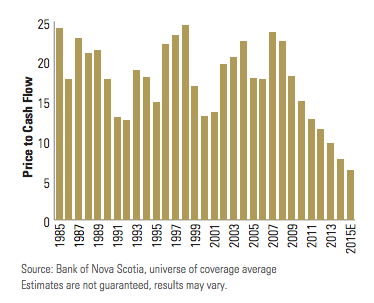
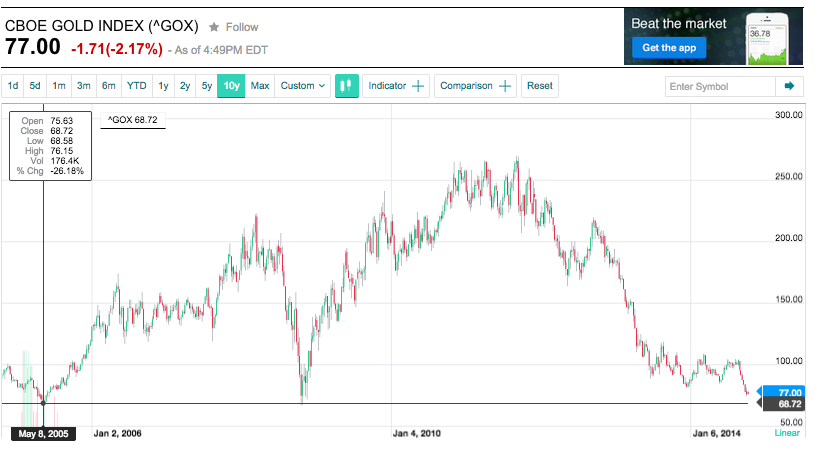
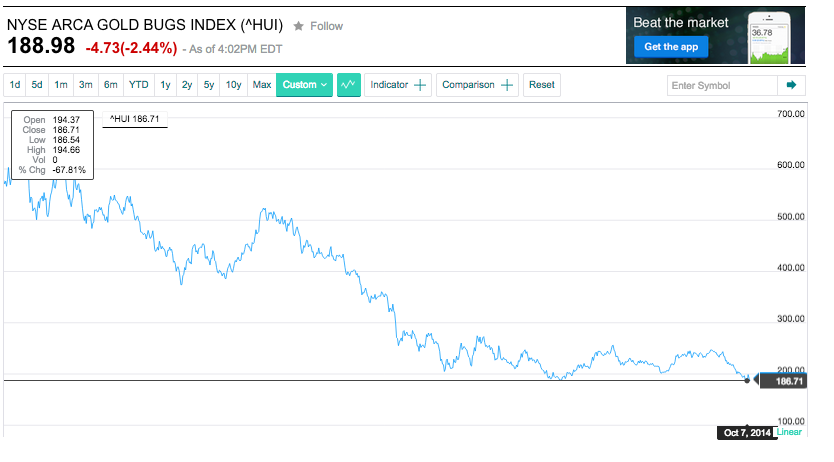
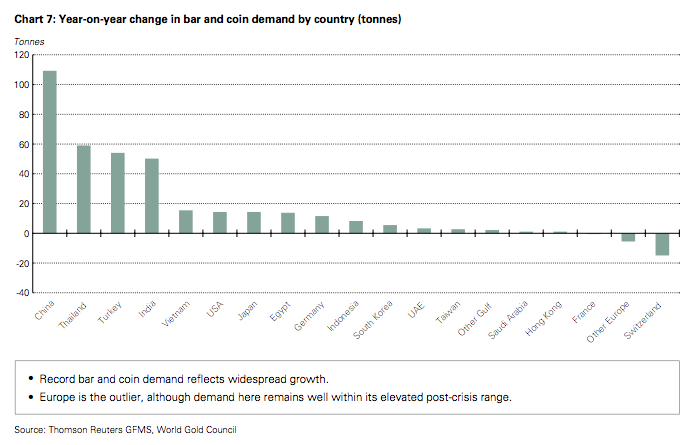
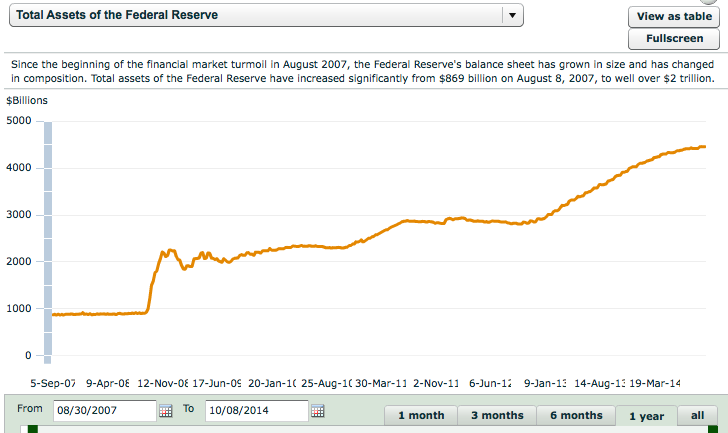
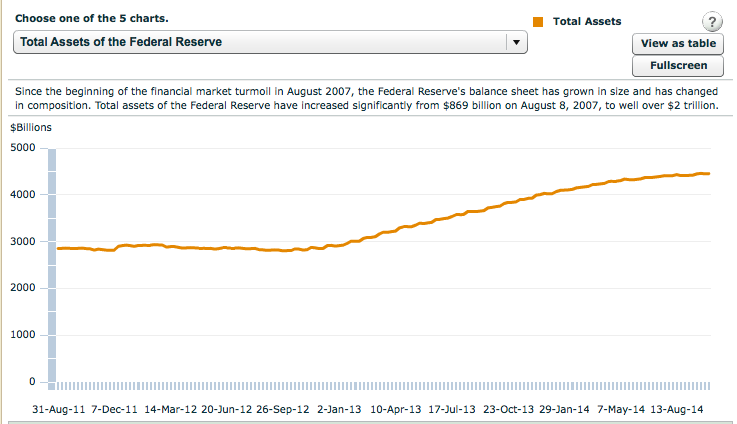
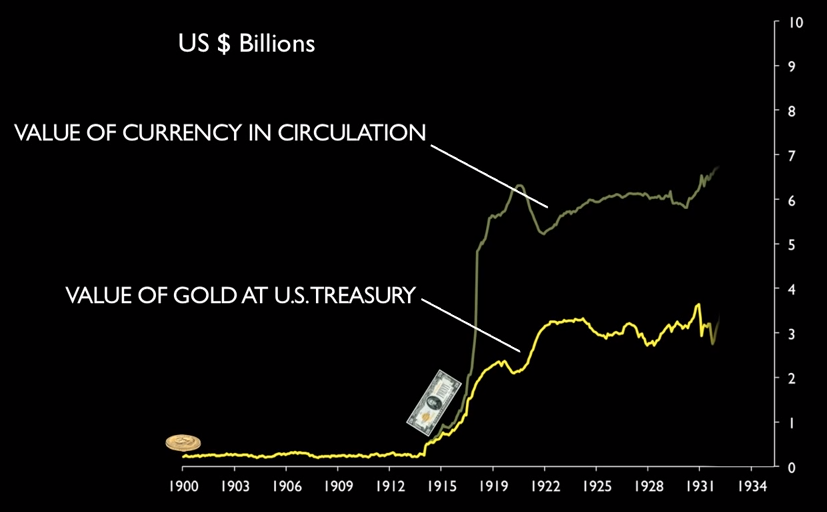
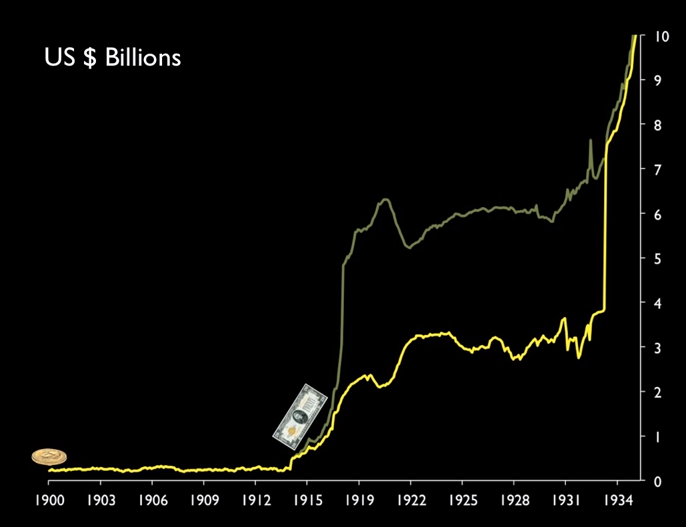
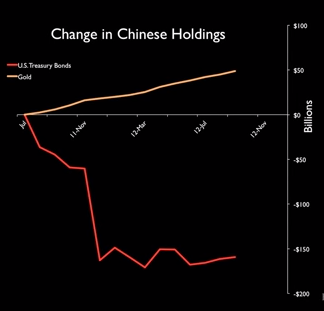

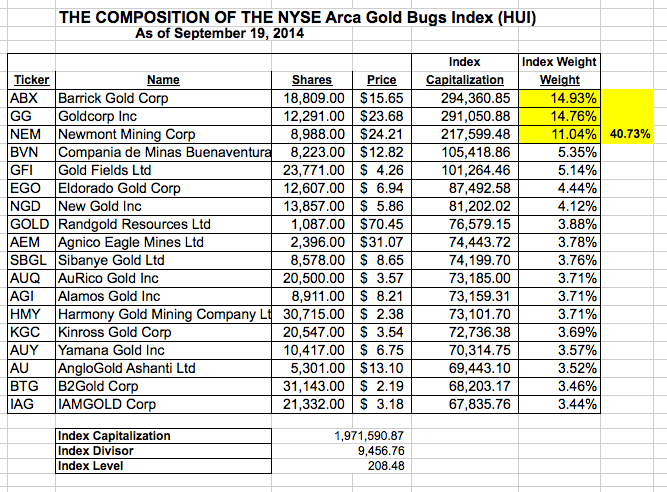
 Is IonQ Stock a Buy?
Is IonQ Stock a Buy?